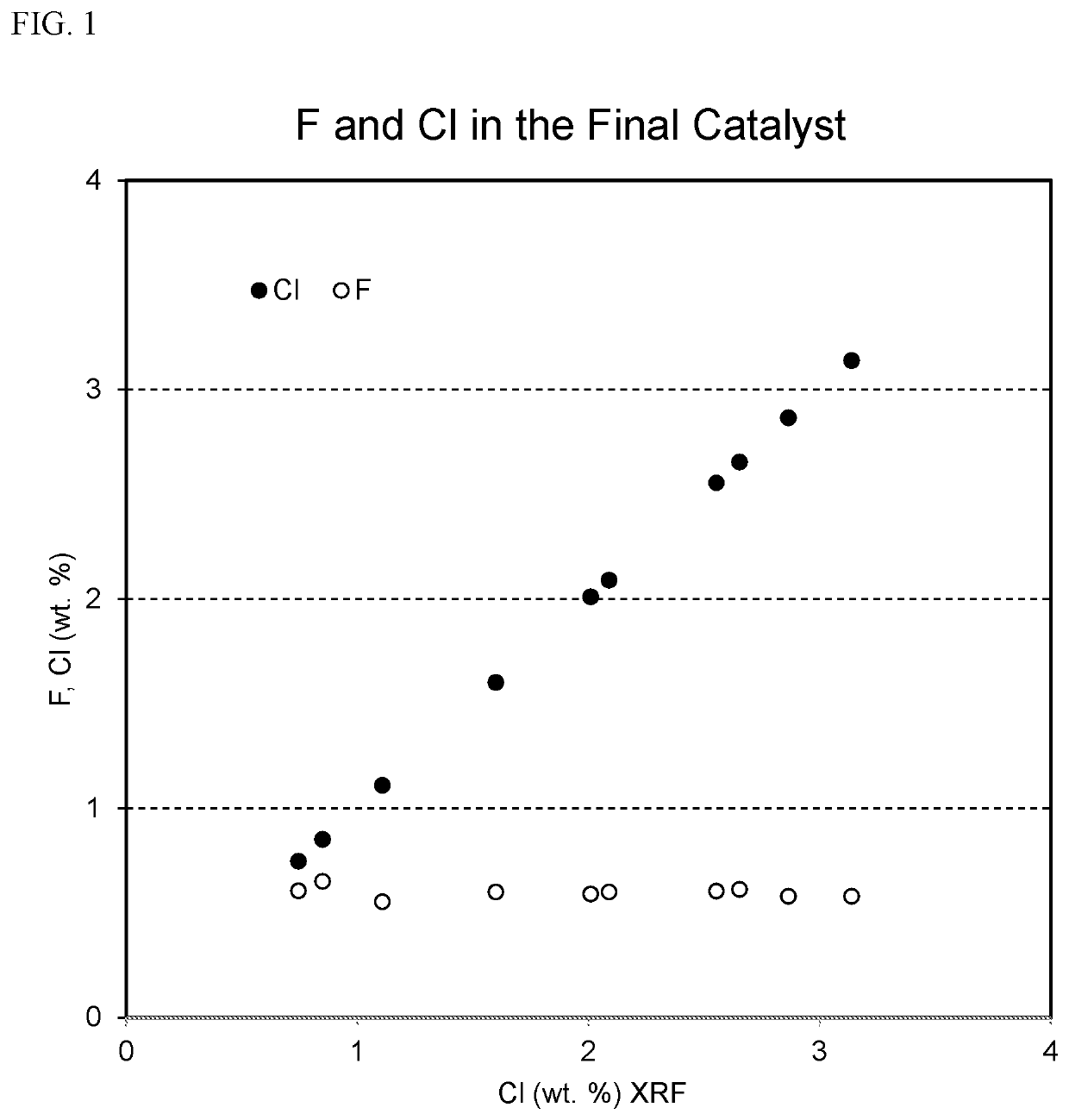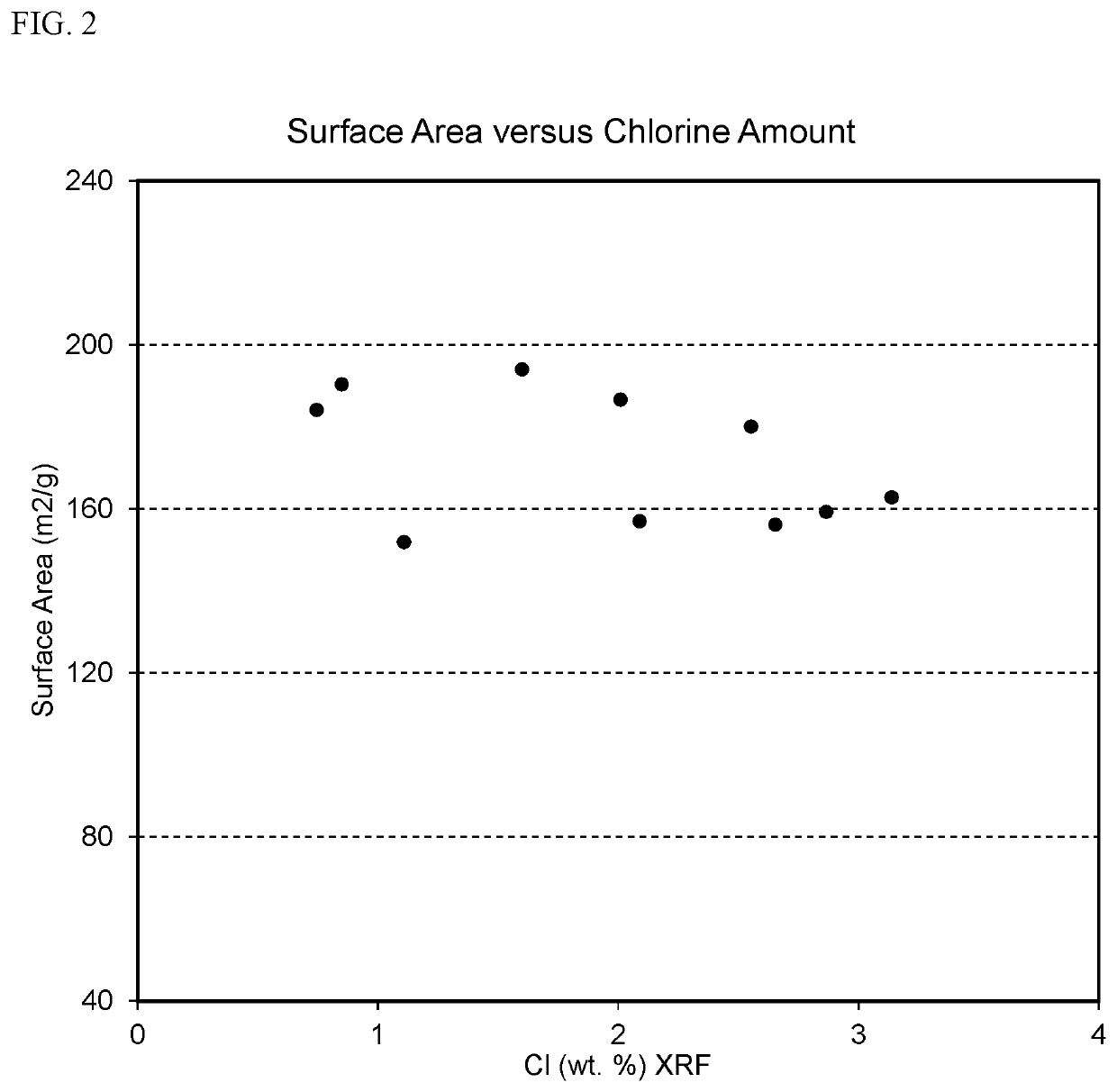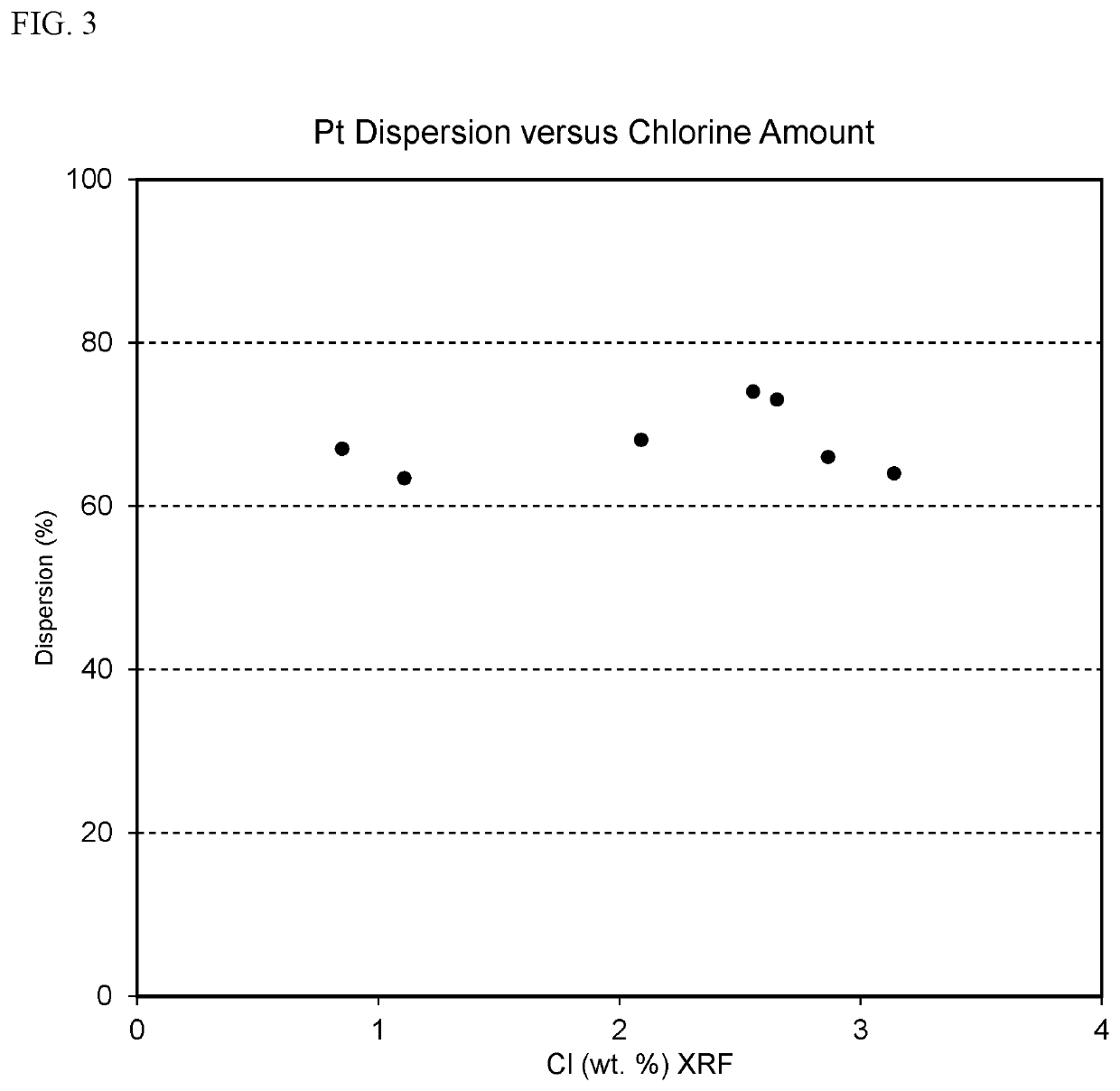Acidic aromatization catalyst with improved activity and stability
a technology of aromatization catalyst and aromatization catalyst, which is applied in the direction of catalyst activation/preparation, hydrocarbon preparation catalyst, physical/chemical process catalyst, etc., can solve the problems of reduced conversion rate, slow loss of activity of catalysts, etc., and achieves excellent selectivity, reduced fouling rate, and increased catalyst activity
- Summary
- Abstract
- Description
- Claims
- Application Information
AI Technical Summary
Benefits of technology
Problems solved by technology
Method used
Image
Examples
example 1
[0096]A standard bound KL-zeolite base consisting of approximately 17 wt. % silica binder was used as the starting material for Example 1. The bound zeolite base was impregnated with Pt, Cl, and F via incipient wetness techniques by contacting the bound zeolite base with an aqueous solution containing platinum tetraammonium chloride (Pt(NH3)4Cl2.xH2O), ammonium chloride, and ammonium fluoride. Then, the impregnated base was dried at 95° C., and calcined at 900° F. to form the supported aromatization catalysts.
[0097]In Example 1, supported catalysts containing approximately 1 wt. % Pt, 0.6 wt. % F, and a range of Cl contents were produced. FIG. 1 illustrates the F and Cl contents of these supported catalysts, with the amount of Cl ranging from less than 1 wt. % to over 3 wt. %. Despite this large range of Cl contents, the surface areas of the supported catalysts were substantially constant, as shown in FIG. 2, and the platinum dispersions in the supported catalysts were substantially...
example 2
[0098]In Example 2, supported catalysts were produced as described in Example 1, and the range of Cl contents was from 0.7 wt. % to 3.1 wt. %. These supported catalysts were compared to two standard supported catalysts: a Large-Scale Control (having 0.98 wt. % Pt, 0.85 wt. % Cl, and 0.71 wt. % F) and a Laboratory Control (having 1.01 wt. % Pt, 0.87 wt. % Cl, and 0.61 wt. % F). The Large-Scale Control and Laboratory Control are nearly identical supported catalysts, with the Large-Scale Control being a historical control catalyst produced on large-scale equipment typical of a catalyst manufacturer, and the Laboratory Control being a control catalyst made in the laboratory at the same time and using the same equipment as the experimental catalysts.
[0099]Using the 40-hour test procedure described above, the selectivity to aromatics and selectivity for benzene+toluene were determined for each supported catalyst. FIG. 5 compares the average aromatics selectivity and the average benzene+to...
example 3
[0100]In Example 3, supported catalysts were produced as described in Example 1, and the Cl contents were 0.75 wt. %, 1.1 wt. %, 2.2 wt. %, 2.7 wt. %, and 3.1 wt. %. These supported catalysts were compared to the two standard aromatization catalysts: the Large-Scale Control and the Laboratory Control.
[0101]FIG. 6 compares the yield-adjusted temperature versus the reaction time for each supported catalyst, using the 40-hour test procedure described above. Table I summarizes the relevant catalyst performance metrics from FIG. 6. As shown in the table and figure, the high chlorine content supported catalysts (2.2 to 3.1 wt. %), unexpectedly, had the best performance of all of the catalysts: the highest catalyst activities (lowest TSOR and TEOR) and the lowest fouling rates. Interestingly, these beneficial results were achieved without significant changes in catalyst surface area, platinum dispersion, or catalyst selectivity (see Example 1 and Example 2).
[0102]
TABLE IExample 3 - Catalys...
PUM
| Property | Measurement | Unit |
|---|---|---|
| peak reduction temperature | aaaaa | aaaaa |
| peak reduction temperature | aaaaa | aaaaa |
| start of run temperature | aaaaa | aaaaa |
Abstract
Description
Claims
Application Information
 Login to View More
Login to View More - R&D
- Intellectual Property
- Life Sciences
- Materials
- Tech Scout
- Unparalleled Data Quality
- Higher Quality Content
- 60% Fewer Hallucinations
Browse by: Latest US Patents, China's latest patents, Technical Efficacy Thesaurus, Application Domain, Technology Topic, Popular Technical Reports.
© 2025 PatSnap. All rights reserved.Legal|Privacy policy|Modern Slavery Act Transparency Statement|Sitemap|About US| Contact US: help@patsnap.com



